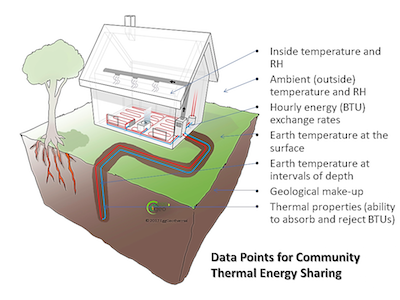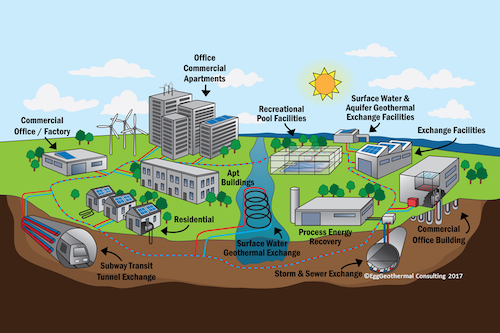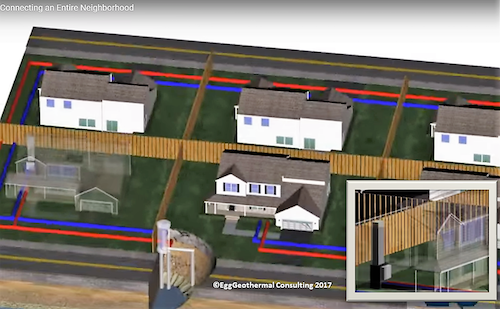This focused write up is based on an article originally published on LinkedIn about the recent spin-off of “Dandelion” from X, the innovation engine of Alphabet (parent of Google).
Validation comes in many different ways. Presently, New York State, NYSERDA, and now Dandelion are working toward implementation of geothermal heating and cooling. Ontarians are embarking on a similar path. Geothermal is needed infrastructure, just like the electric grid or city water mains. This has to happen, and now, it’s underway.
When we hear of “The Grid,” we often think of electrification. But there are more “Grids.” Think of the city water mains, wastewater, and of course communications, to name a few. The final frontier is the “Thermal Energy Grid.” To manage a grid, you have to have data. Data provides the information to know where the resources are needed
Google Maps and Geothermal
Information is power for good in the right hands. Google-Maps are a great example of this. Thermal information is the new frontier. To have data points for temperature will prove enormously useful as we move forward. Imagine having all of the following data points for any area:
- Inside temperature and RH
- Ambient (outside) temperature and RH
- Hourly energy (BTU) exchange rates
- Earth temperature at the surface
- Earth temperature at intervals of depth
- Geological make-up
- Thermal properties (ability to absorb and reject BTUs)

The Renewable Thermal Energy Internet of Things (IoT)
Putting all of this data together for communities will provide real data that is useful for thermal energy sharing. In the image below, my artist depicted what my peers and I believe is the end result of this full integration of thermal IoT. Waste heat from building cooling towers and condensers is piped into pool and laundries and process heat need of all kinds. In winter, commercial buildings have plenty of waste heat that will be piped into residential use. IoT helps us to know where to send our BTUs.

Our webmaster did this simplified video of a neighborhood grid about half-a-dozen years ago, but you’ll get the idea. It’s illustrated on a larger scale in this city grid that I prepared for a meeting with the NYC Commissioners a couple of years ago.

Sometimes, all that is needed to validate a renewable energy technology is a government stimulus. Other times, it takes something more. In Ontario, that “something more” is an energy utility that has seen that geothermal is moving in as a real competitor to natural gas (NG). In New York, Dandelion may be that icing on the cake.
To find out more about geothermal opportunities for you, visit the New York Geothermal Exchange Organization (NY-GEO), the New York State Energy Research and Development Authority (NYSERDA), the International Ground Source Heat Pump Association (IGSHPA) or the Ontario Geothermal Association (OGA), websites.














